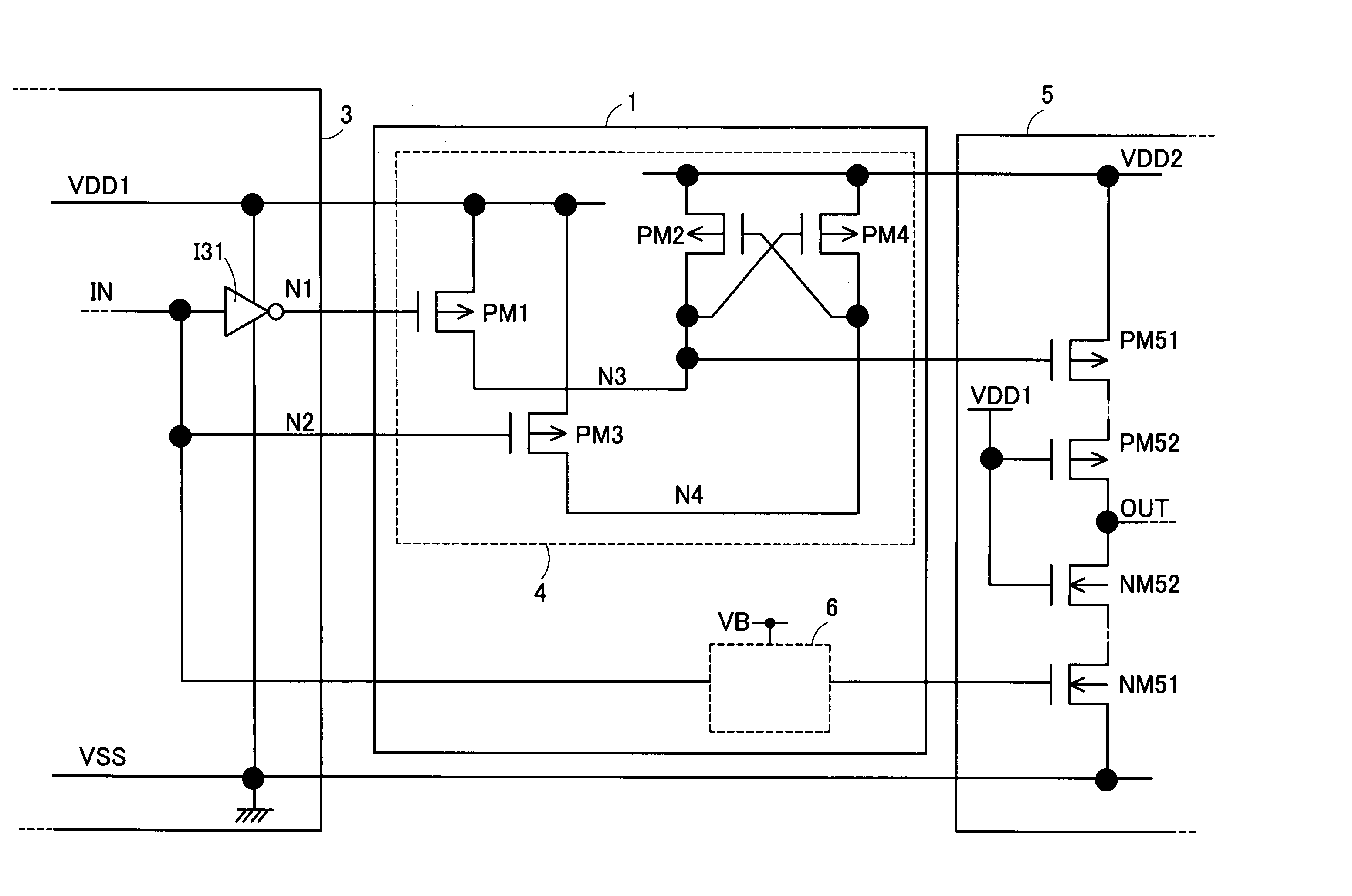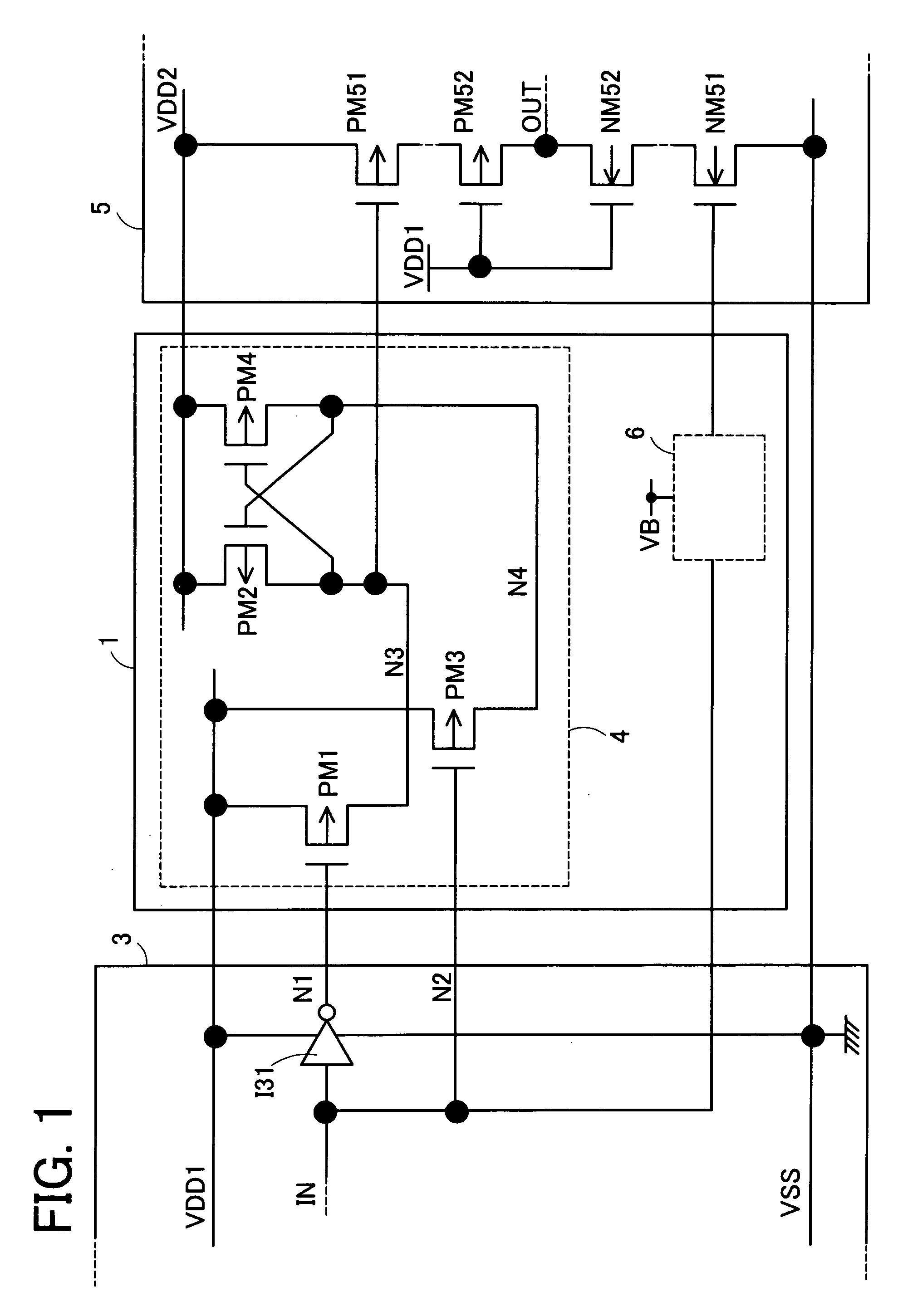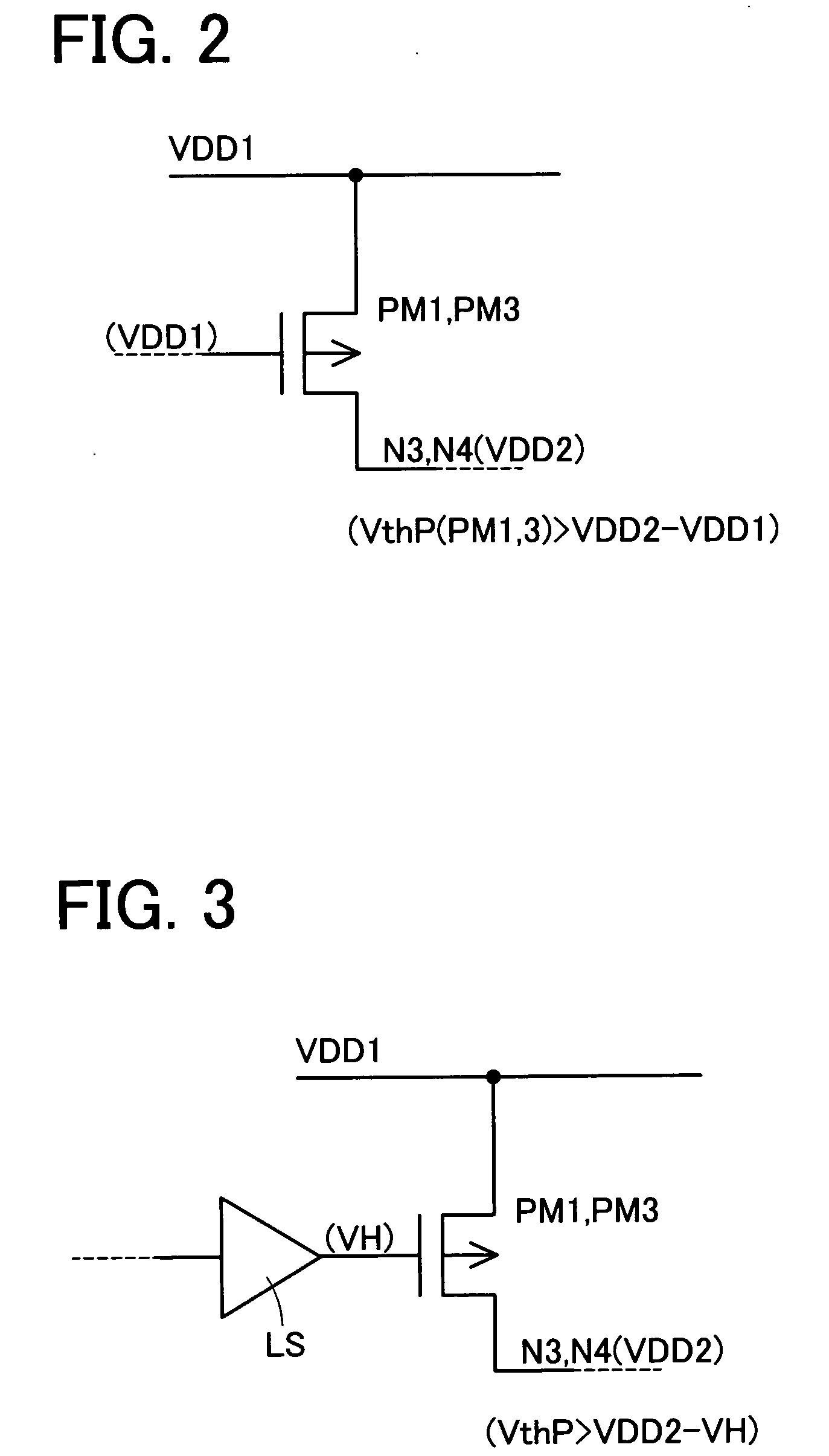Semiconductor device
a technology of semiconductors and devices, applied in the direction of pulse automatic control, pulse technique, electronic switching, etc., can solve the problems of steady current consumption and raise problems, and achieve the effect of easy execution
- Summary
- Abstract
- Description
- Claims
- Application Information
AI Technical Summary
Benefits of technology
Problems solved by technology
Method used
Image
Examples
Embodiment Construction
[0036] Embodiments implementing a semiconductor device provided by the present invention are explained by referring to FIGS. 1 to 14 as follows.
[0037]FIG. 1 is a circuit diagram showing a preferred embodiment implementing a semiconductor device provided by the present invention. The semiconductor device comprises a first circuit group 3 and a second circuit group 5. The first circuit group 3 is a group of circuits operating by being driven by a first power-supply voltage VDD1 relative to a reference voltage VSS. On the other hand, the second circuit group 5 is a group of circuits operating by being driven by a second power-supply voltage VDD2 relative to the reference voltage VSS. The second power-supply voltage VDD2 has a voltage level higher than the first power-supply voltage VDD1.
[0038] The first circuit group 3 is a circuit portion required to have a high processing speed. The first circuit group 3 is a circuit portion suitable for applications to control and processing, whic...
PUM
 Login to View More
Login to View More Abstract
Description
Claims
Application Information
 Login to View More
Login to View More - R&D
- Intellectual Property
- Life Sciences
- Materials
- Tech Scout
- Unparalleled Data Quality
- Higher Quality Content
- 60% Fewer Hallucinations
Browse by: Latest US Patents, China's latest patents, Technical Efficacy Thesaurus, Application Domain, Technology Topic, Popular Technical Reports.
© 2025 PatSnap. All rights reserved.Legal|Privacy policy|Modern Slavery Act Transparency Statement|Sitemap|About US| Contact US: help@patsnap.com



